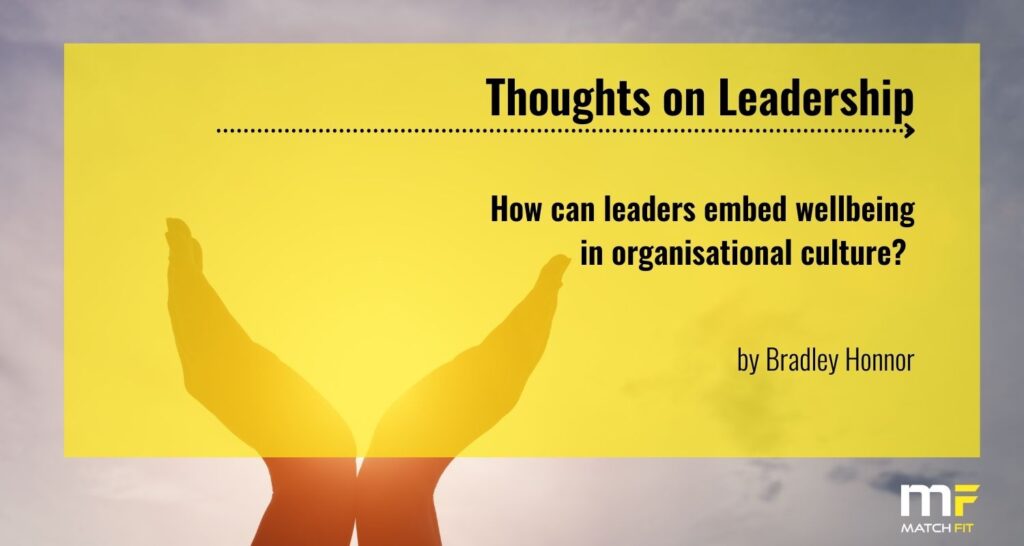by Bradley Honnor
A topic that comes up frequently lately is how to make workplace wellbeing more than just a tick box exercise.
One of the issues at the forefront of this challenge for organisations is that we live in a commercial world. Our economic system is built around making money and long hours, which doesn’t necessarily fit naturally with the work-life balance. The complexity for a lot of businesses is that ultimately the goal is performance, so we want people working hard, engaged and smashing their targets.
Historically, we’ve associated hard work and long hours with commitment and performance; you could argue that someone like Elon Musk who’s worked extremely hard with really long days for many years—and insists on the same ethic from the people around him—has become successful and wealthy because of it. That obviously doesn’t take into account the personal sacrifice or the support system he must have had in place to achieve it, but the perception is still one of supreme success.
What’s come to light more recently, with more employees experiencing mental health concerns, is that there is a correlation between our physical and mental health, and our performance. There is evidence through psychology and neuroscience to suggest we think and perform better if we’re well-rested. There are lots of studies of athletes, for example, that show how performance and sleep are linked. There are even studies in the wider population which show that habitually sleeping less than seven hours a night increases susceptibility to respiratory infection!
Businesses are embracing the concept that looking after staff wellbeing is important for performance, but at the same time, the competition and the pressure to generate revenue has not gone away. The big challenge for leaders is how to make these agendas compatible.
This takes a leap of faith – it’s not necessarily something you can prove or immediately measure. The mixed messaging around working long, hard days versus how a work-life balance makes you a high performer and a more rounded individual just add to the challenges. As leaders, we have a responsibility to look after our team. It’s about saying ‘no, we want to be the type of organisation and culture where people are actually happy’.
Part of this responsibility is in modelling these behaviours ourselves. If an organisation is saying ‘we value wellbeing, there’s more to life than work’ but the leadership is still putting in those hours and not taking breaks, the subliminal message is still one of presenteeism; hard work, not smart work. So it is really important for leadership to do two things: to give people permission and make it clear that it’s okay to prioritise their wellbeing and, when they notice people aren’t doing that, to gently challenge it.
A leader needs to look for the signs that someone’s under pressure and getting stressed, and be prepared to take some work off them for a period of time, or find a way for them to get that space they need. It’s going to be different for everybody, and does require openness and trust.
A healthy culture is one where no-one feels guilty about having to pick up the kids, or has to pretend they’re not actually walking the dog when the boss rings after 5pm. And it’s not hard for leaders to foster this – there are techniques that can are quite easy to build into the day. For instance, I generally don’t book any calls on Wednesday or Friday afternoon. There are obviously things that sometimes creep in that may be too important to put off, but people do respect this and try not to book into that time.
It’s one of the tips we recommend to leaders on our CLIMB programme, because having time to think, reflect and strategise is invaluable. If you don’t block that space out it will naturally fill, like water in sand.
If leaders are walking the talk, it becomes much easier for their teams to follow.

